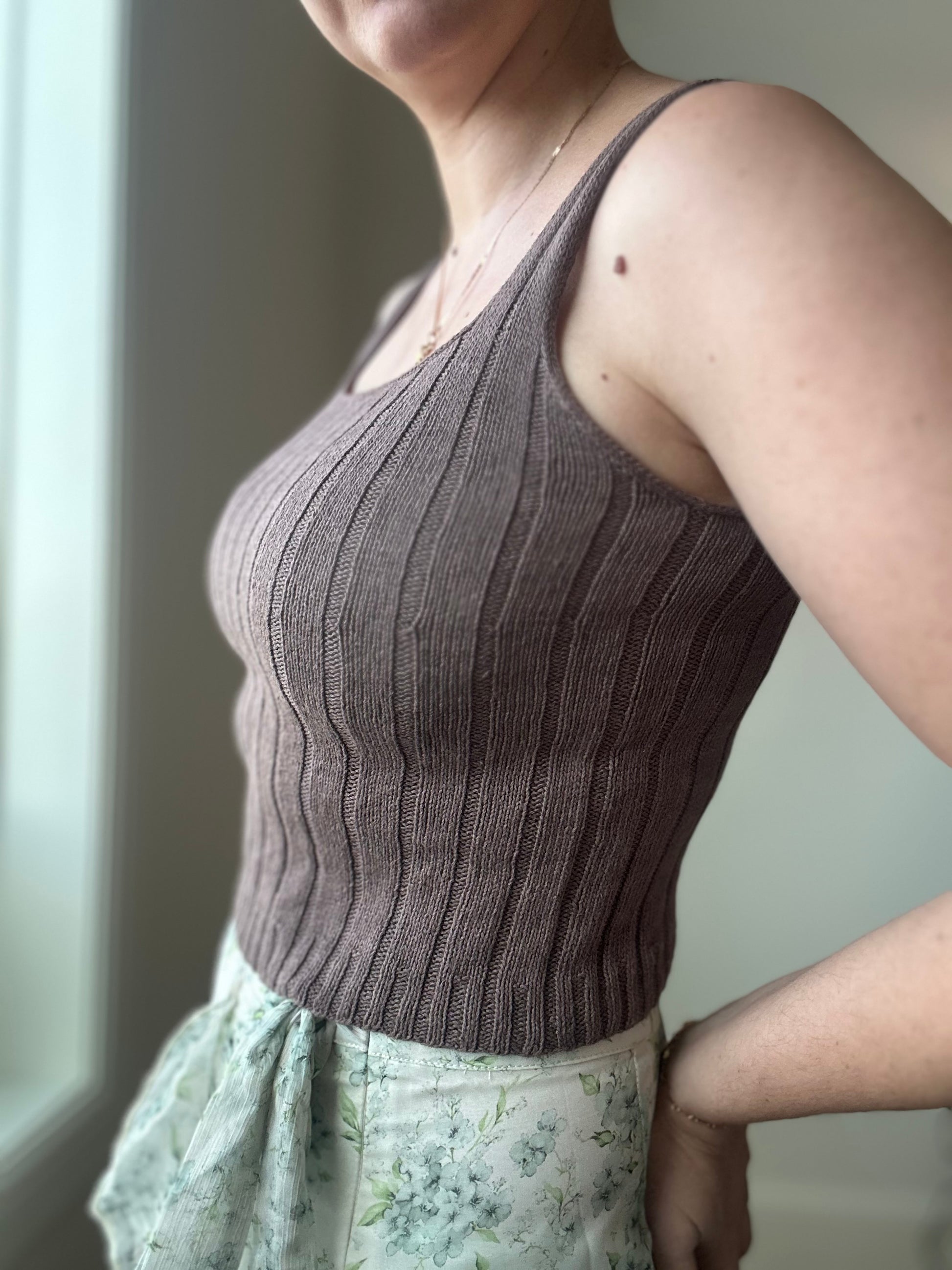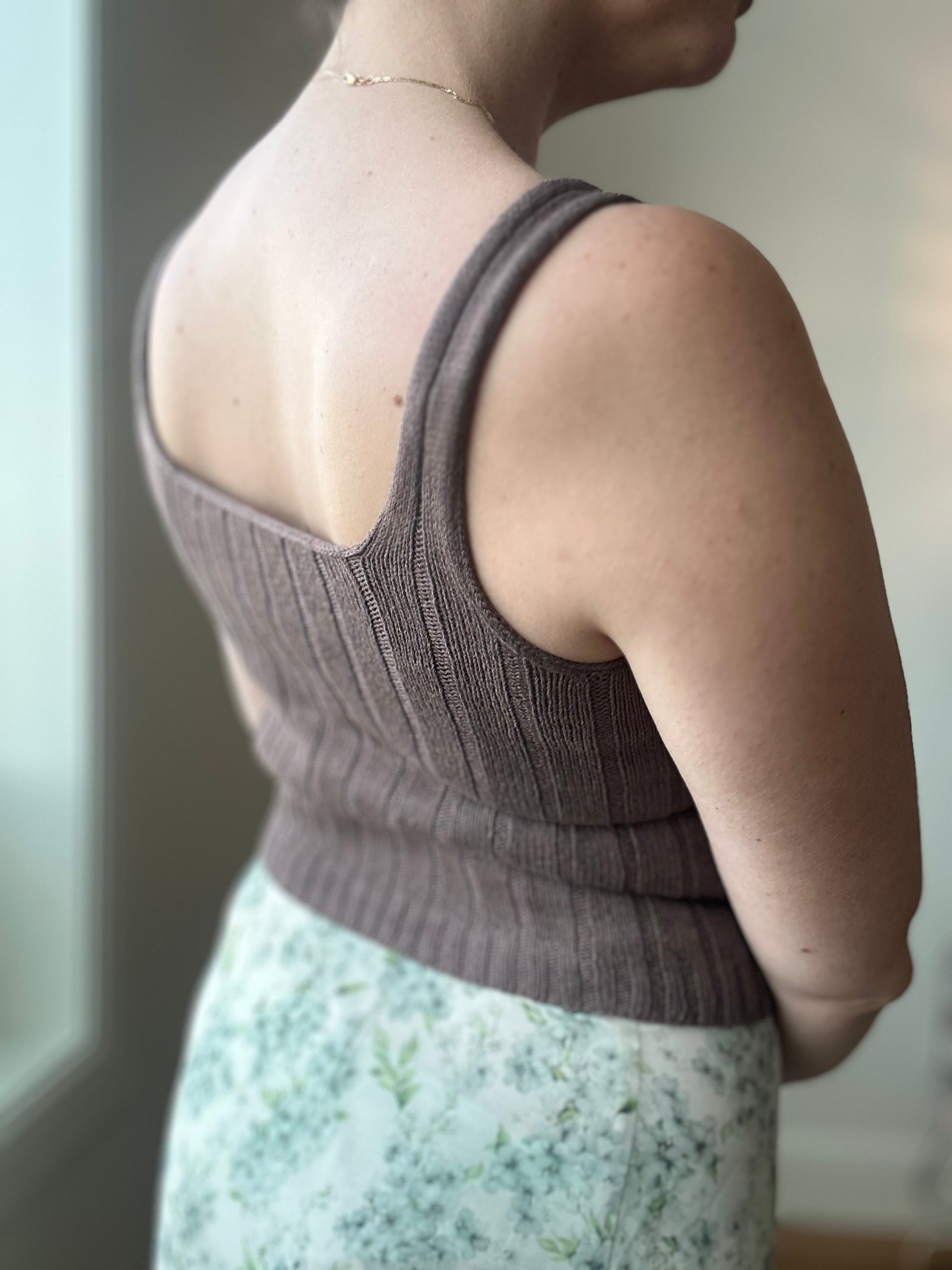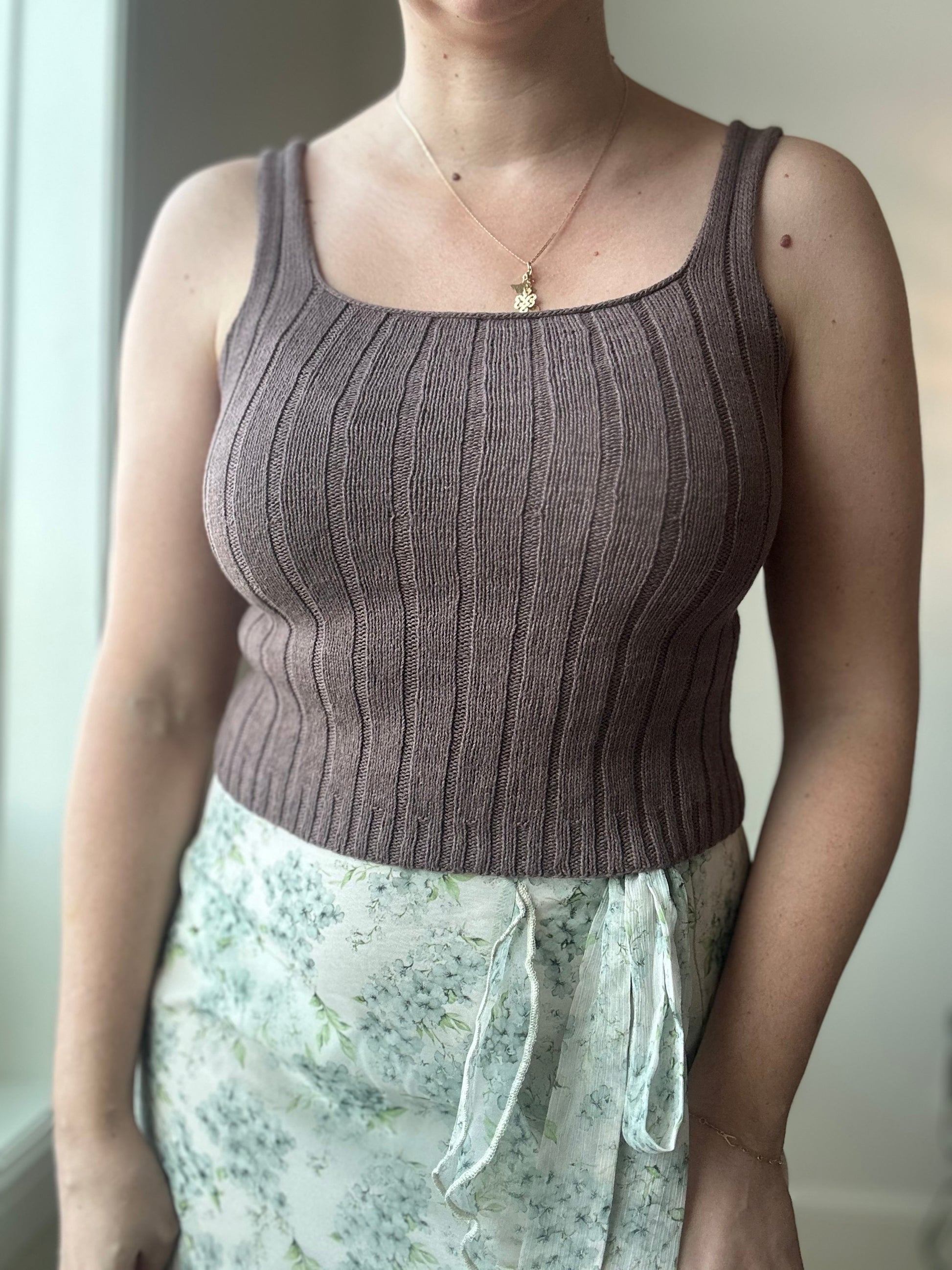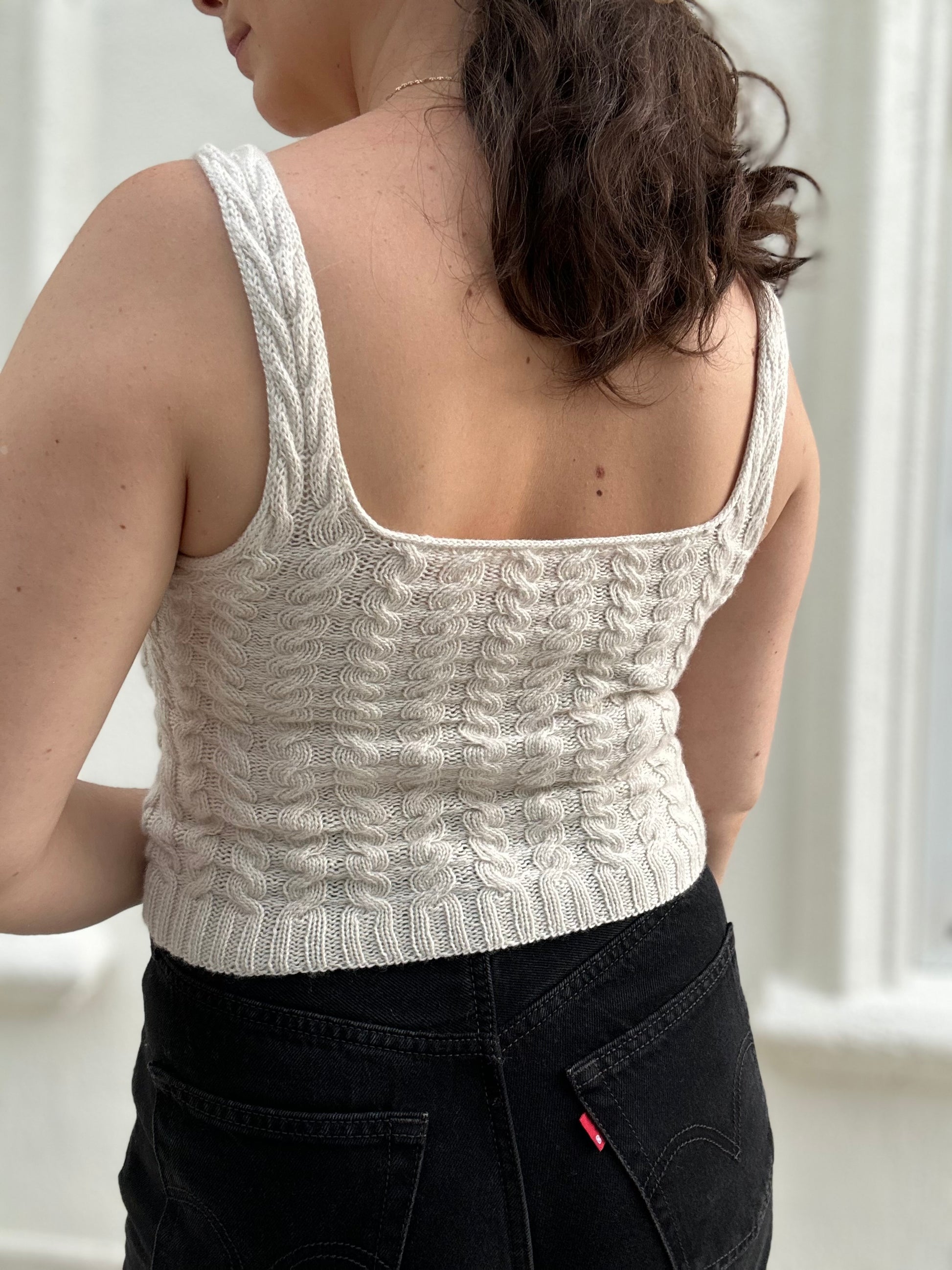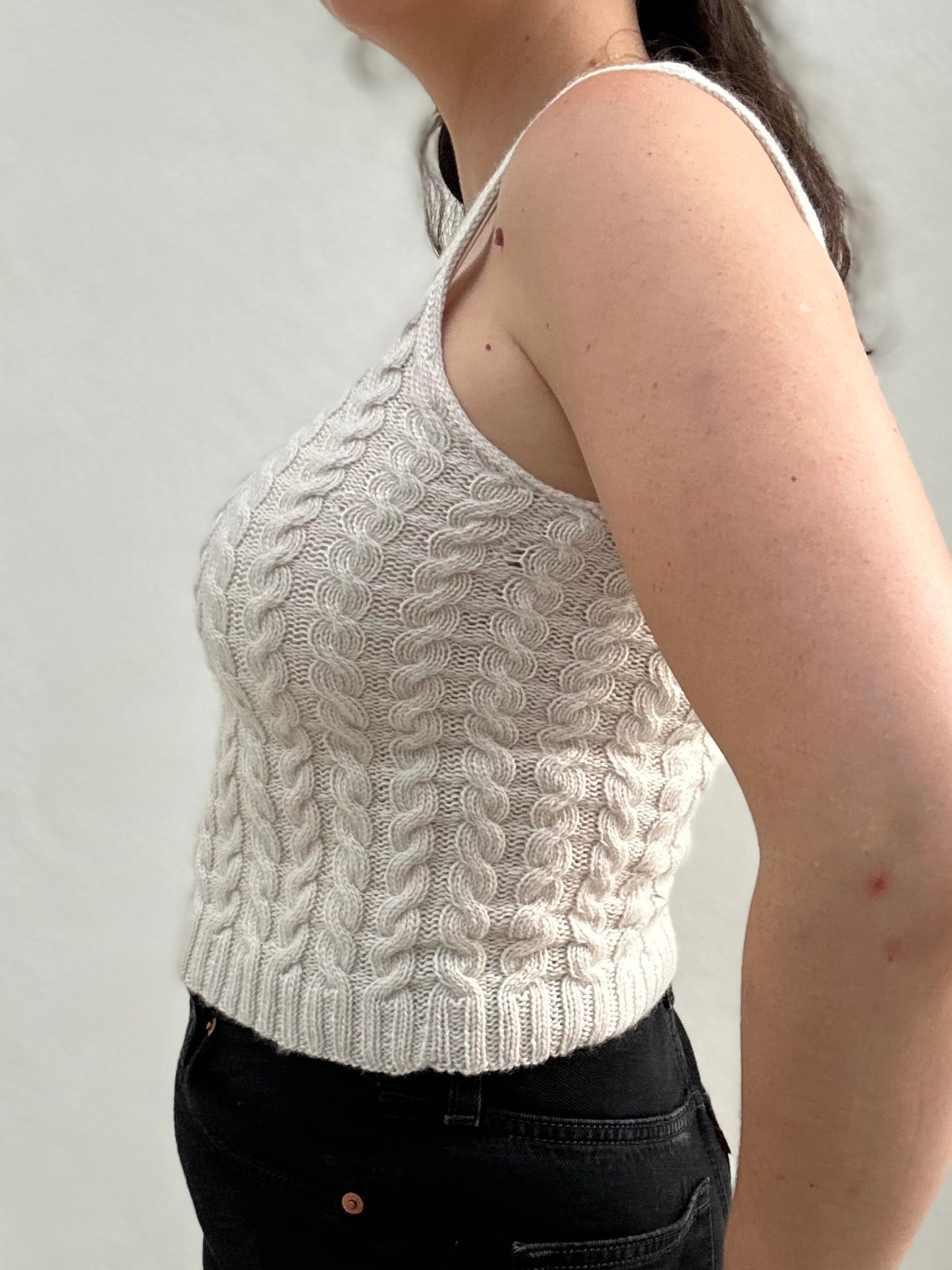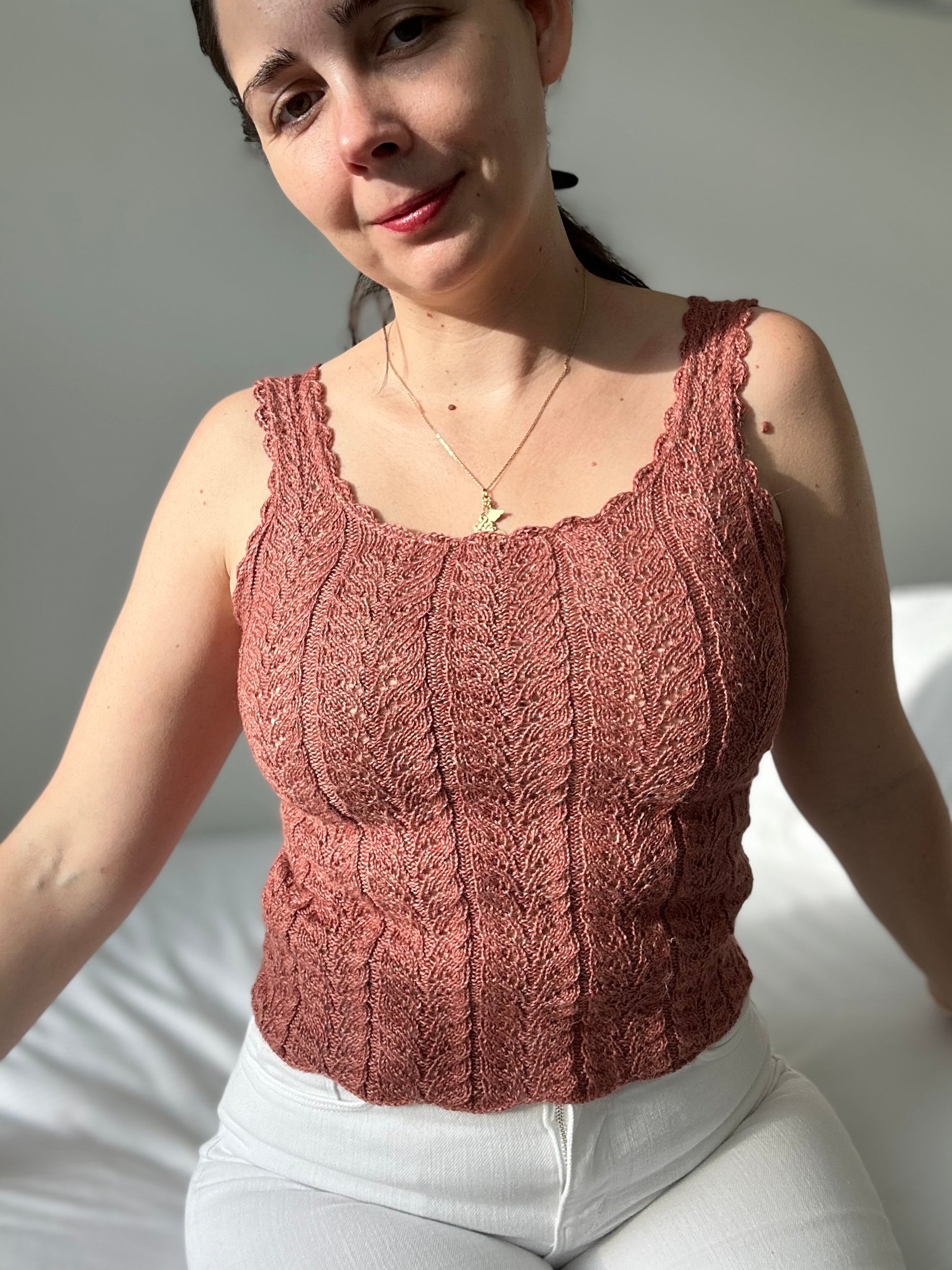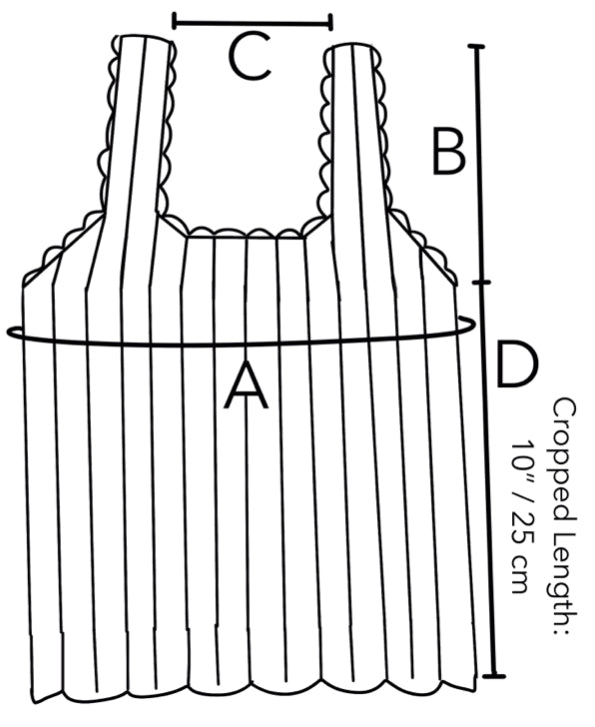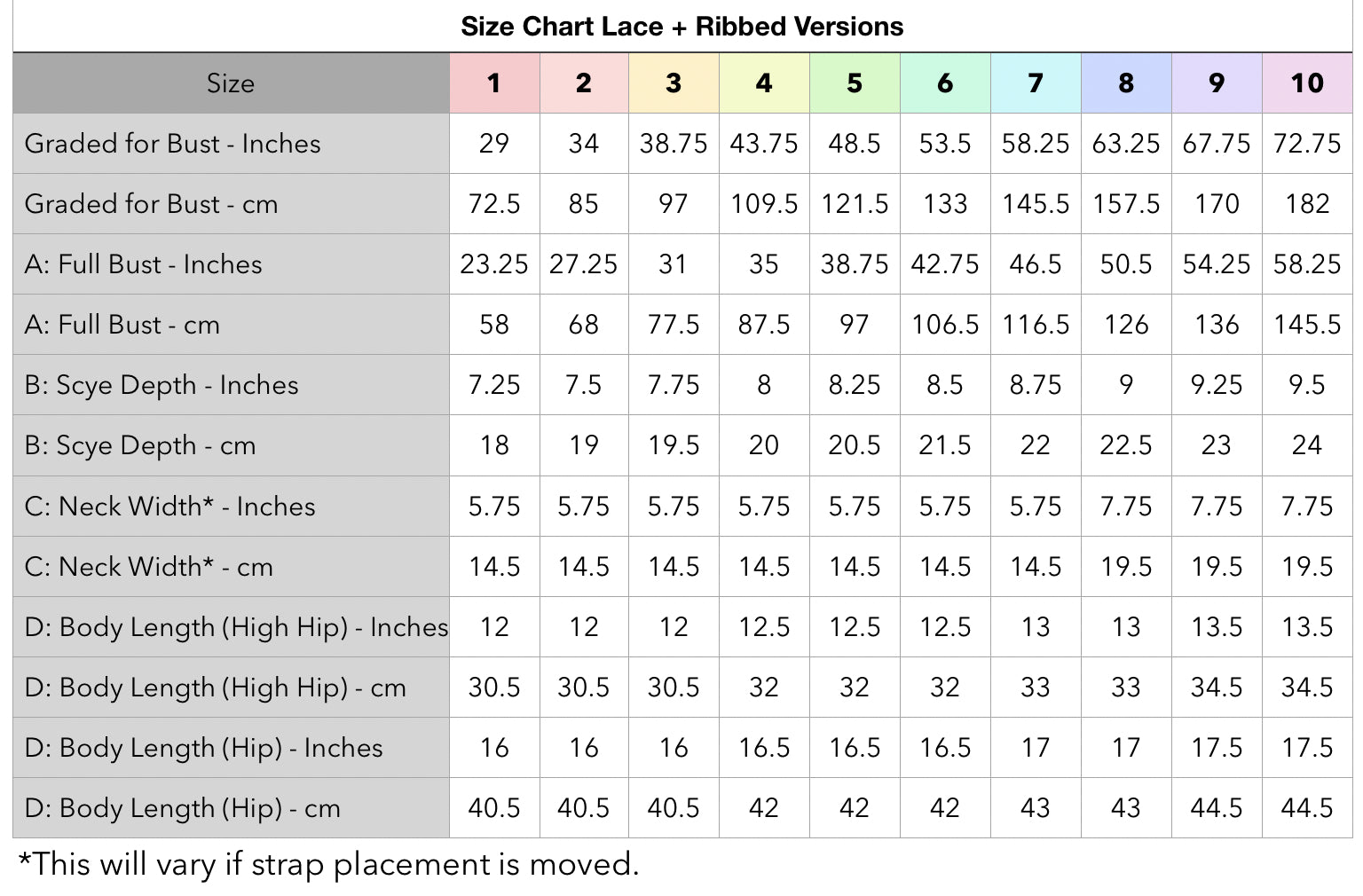Four Seasons Camisole - Knitting Pattern
Four Seasons Camisole - Knitting Pattern
Couldn't load pickup availability
Share
The Four Seasons camisole is a season fluid piece designed for the creative and discerning knitter. Wear it on its own, layer it under that special hand knit cardigan, or wear it as an extra base layer in those cold winter months. Customize it to the season you plan to wear it with three possible textures, multiple ways to shape the body, various lengths, and an array of other modification possibilities (see list below). Embrace the flow of nature and knit your season.
Construction: This camisole is knit from the bottom up. Knitters will bind off for the underarms, and work armhole shaping. The back is worked first, after which the back neckline is bound off and the straps are worked and placed on hold. The front is worked next, with slightly more armhole shaping. Once the front straps are knit, they are attached to the back straps with a three needle bind-off. Finally, finish the neckline and armholes with I-cord or a scalloped crochet trim.
Design choices include:
1. Choose your texture - There’s options for ribbed, cabled, or lace.
2. Knit the body to one of the three recommended lengths, or to your desired length.
3. Need bust darts? The pattern includes optional bust dart short rows.
4. Add body decreases for an A-line shape, or increases for waist shaping, as desired.
5. Choose your strap placement and which neck option you’d prefer (U-neck or square)
6. Choose an I-cord or crochet trim
All my samples include bust darts, but no body shaping. The ribbed version follows the square neckline mod.
Difficulty: Intermediate to Advanced
The ribbed version is the most straightforward. The bust short rows have no impact on the stitch pattern, and the shaping is straightforward with the pattern stitch.
The cabled version is slightly more complex. The short rows will slightly offset the cables of each column on the front, so more care is needed to cable each at the right interval. It is also sometimes necessary to cable while working decreases.
The lace version is the most complex. The short rows will offset each column on the front, which makes maintaining the stitch pattern for the remainder of the body and front trickier. The lace can also make the armhole shaping a bit trickier. Each lace column is worked in stockinette while being decreased, except for the strap which is meant to maintain its stitch pattern. The back armhole shaping has charts to help visualize.
Trying on the piece and making decisions based on your body and undergarments will give you the best results. The pattern includes instructions for moving the straps to cover your bra, and for increasing or decreasing to another size.
There is a thorough construction overview, as well as diagrams included throughout the pattern to help visualize the different steps.
As with all my size inclusive garment patterns, you can use the code ANTIFATTAX to get 20% off the pattern, intended for sizes 6-10 to help combat the extra costs incurred by knitting larger sizes.
This pattern has been professionally tech edited by Hannah Middleton, and test knitted.
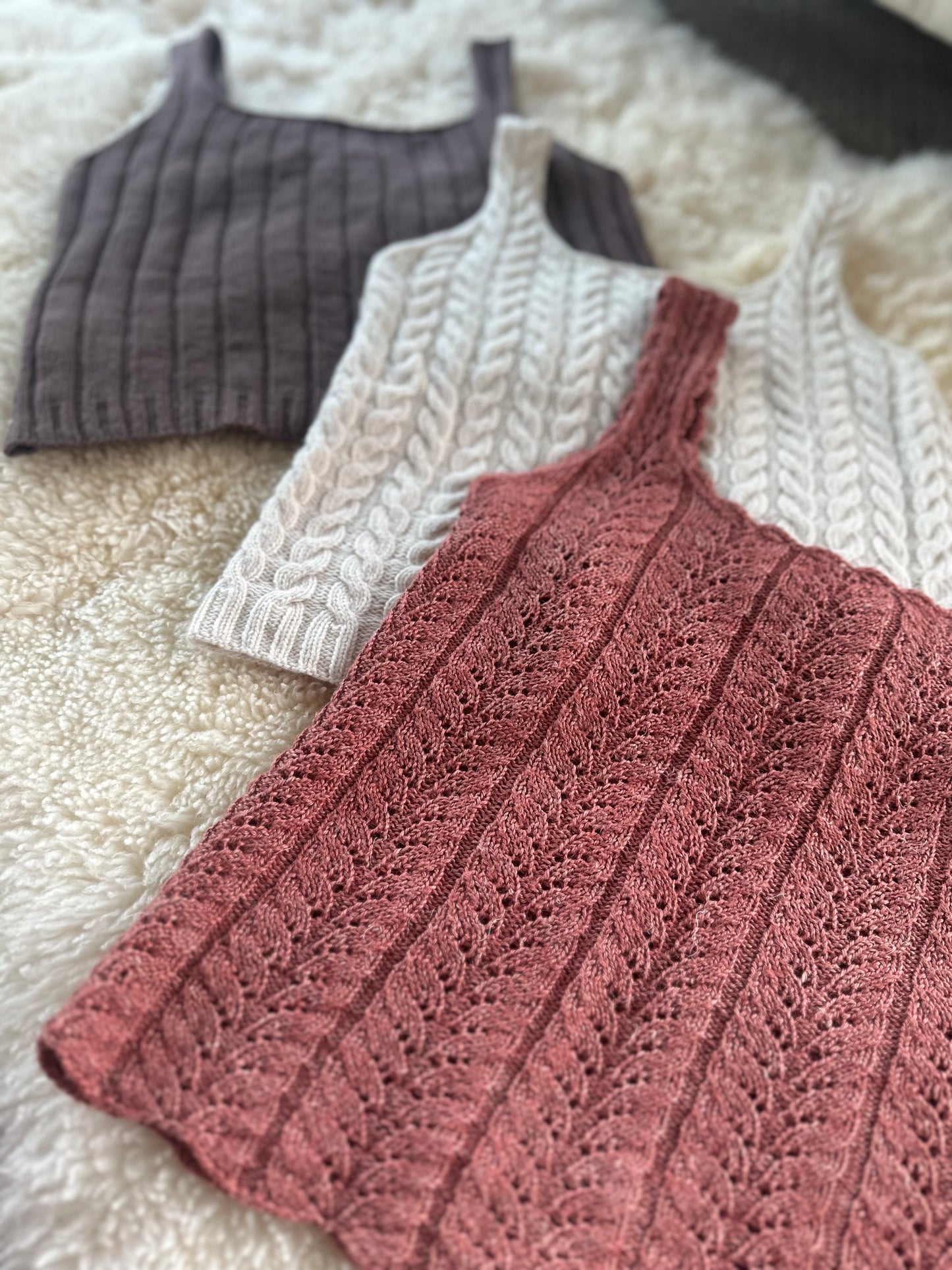

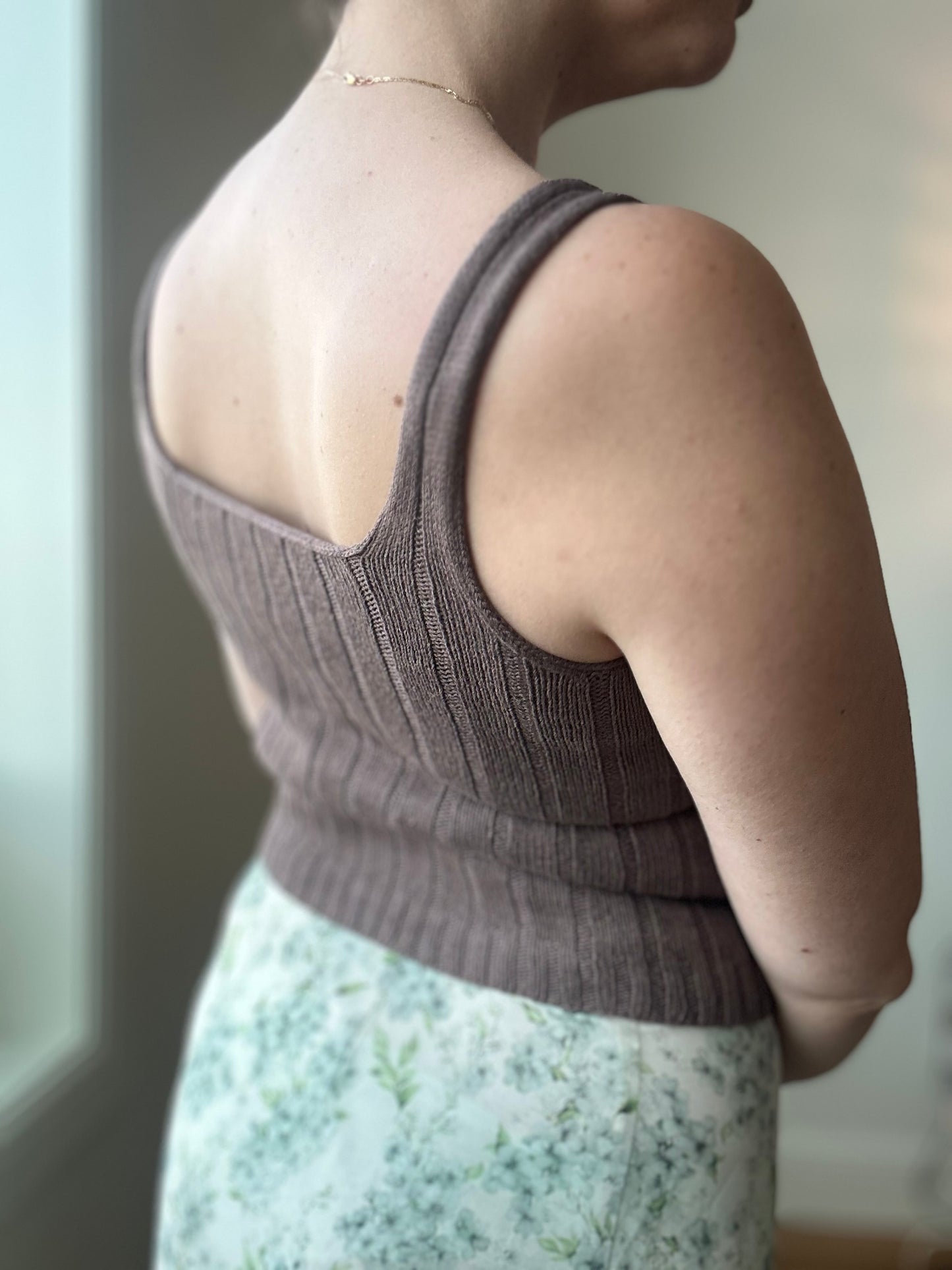

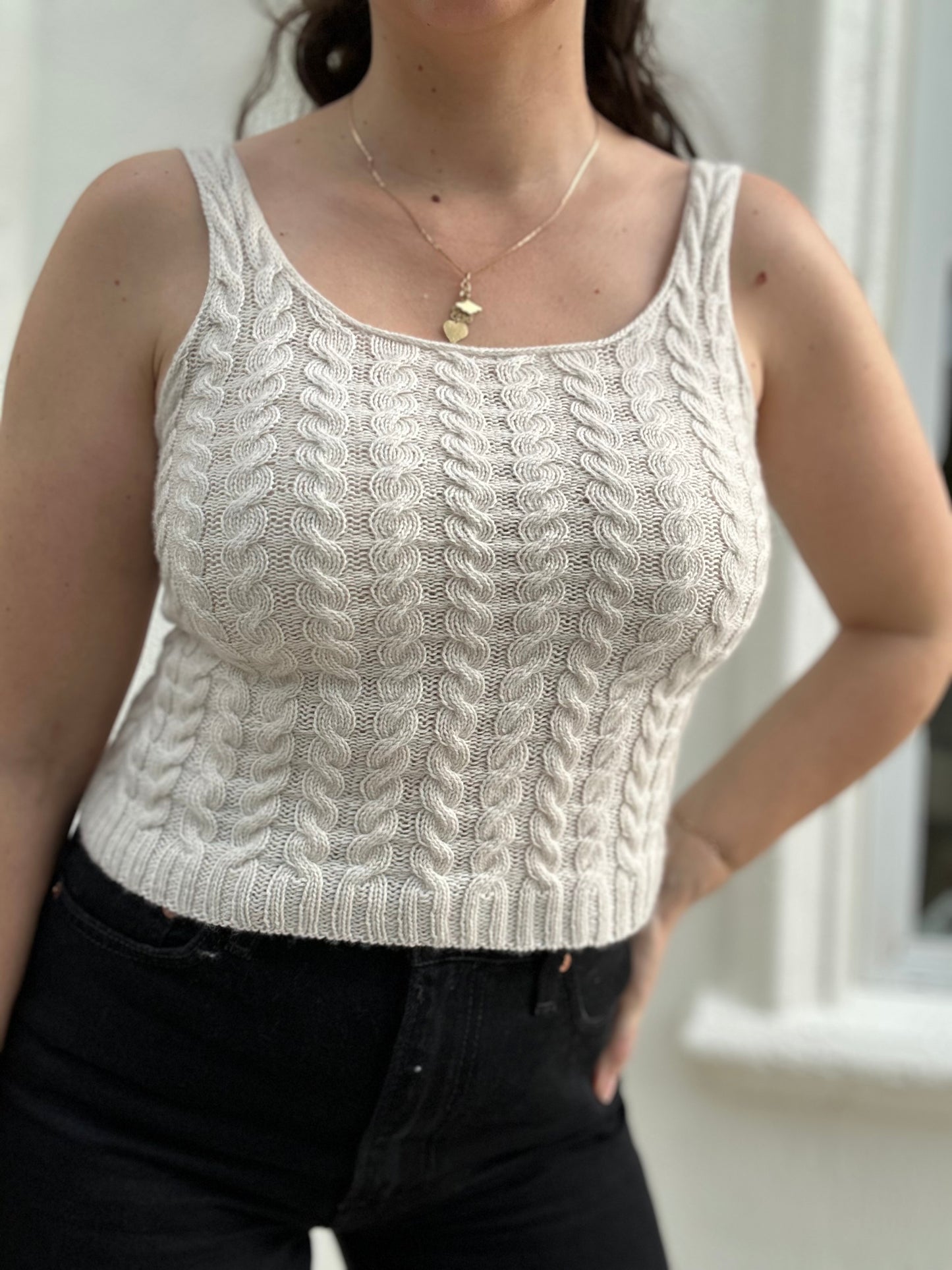
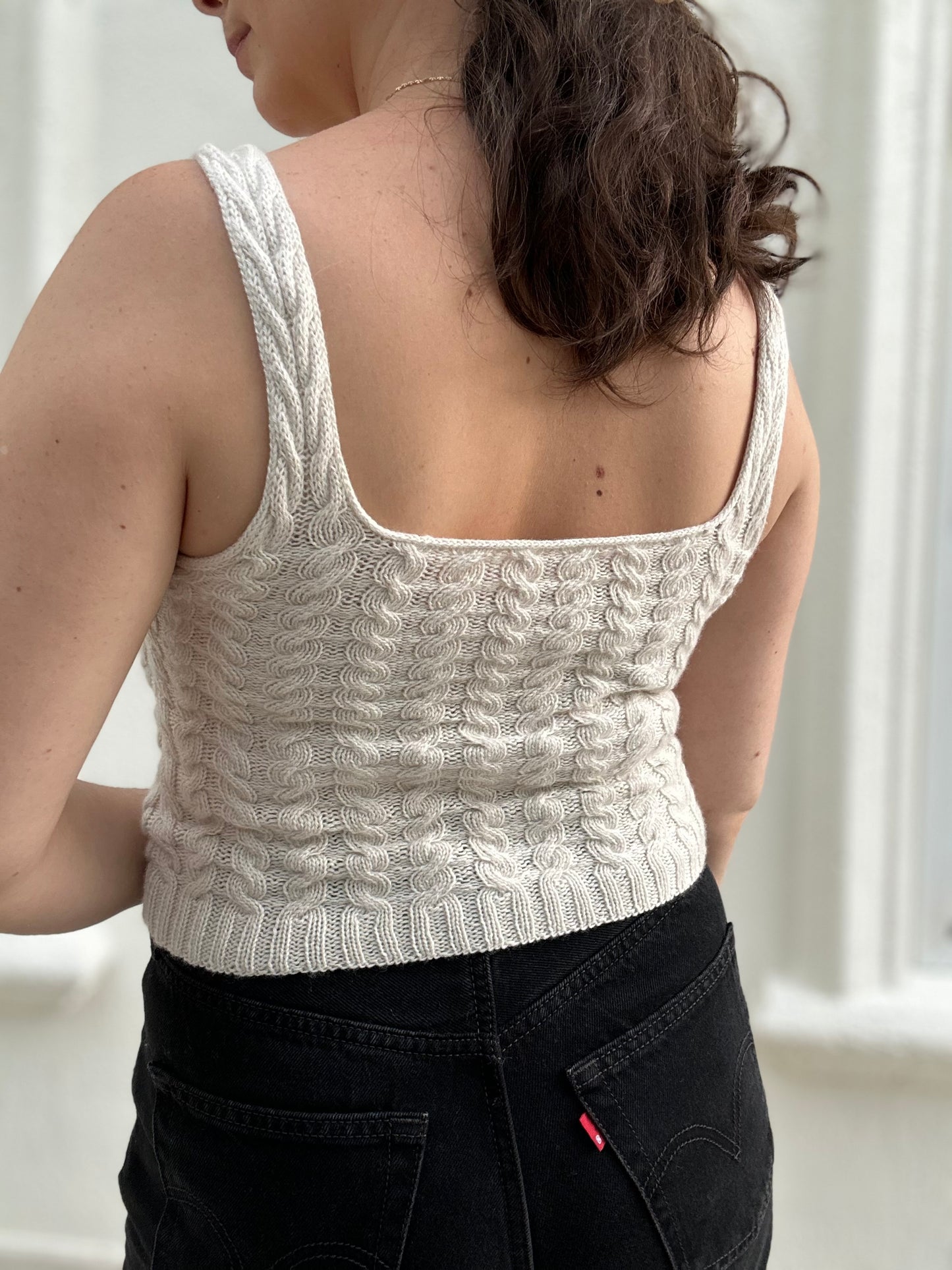
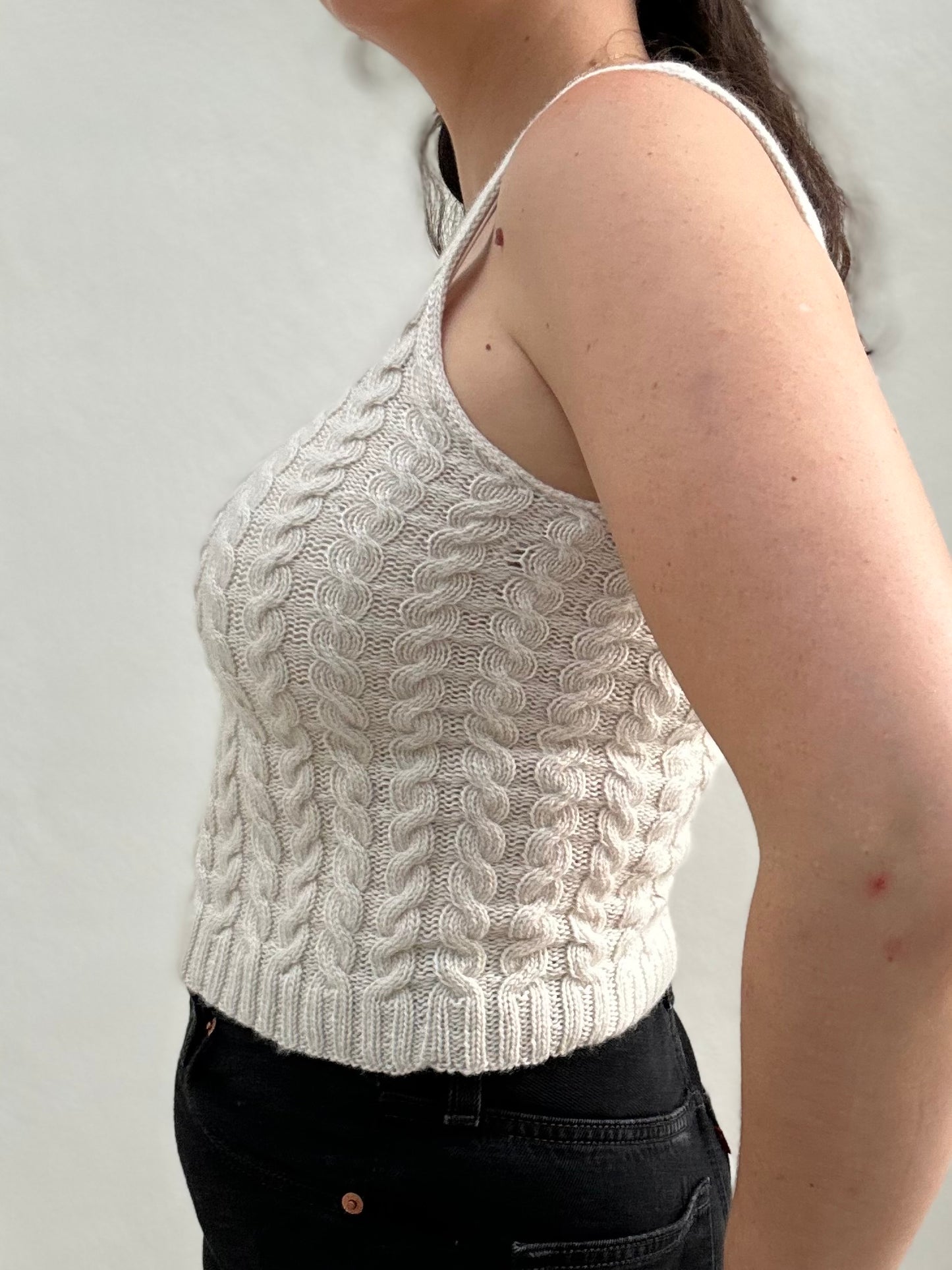
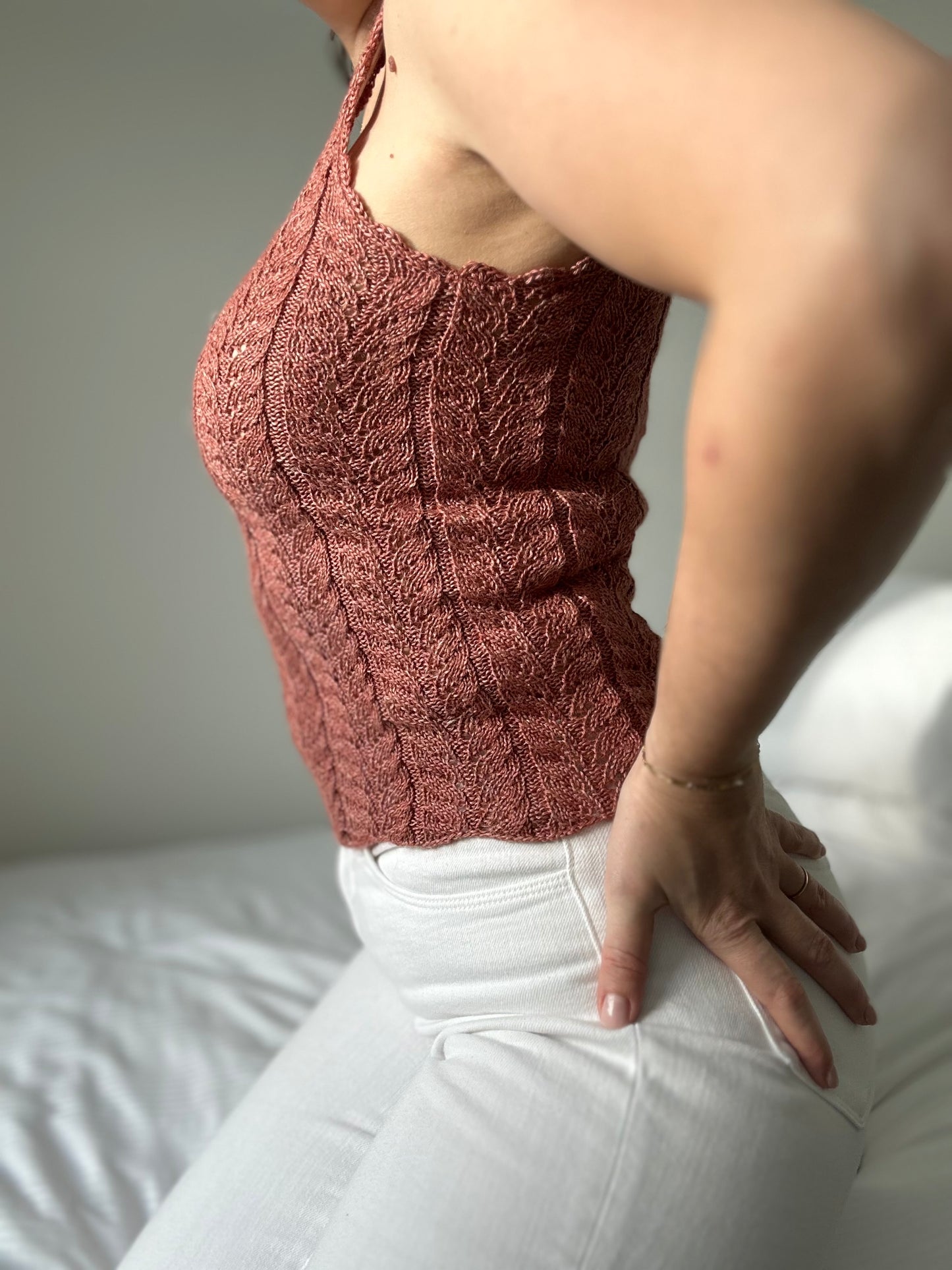

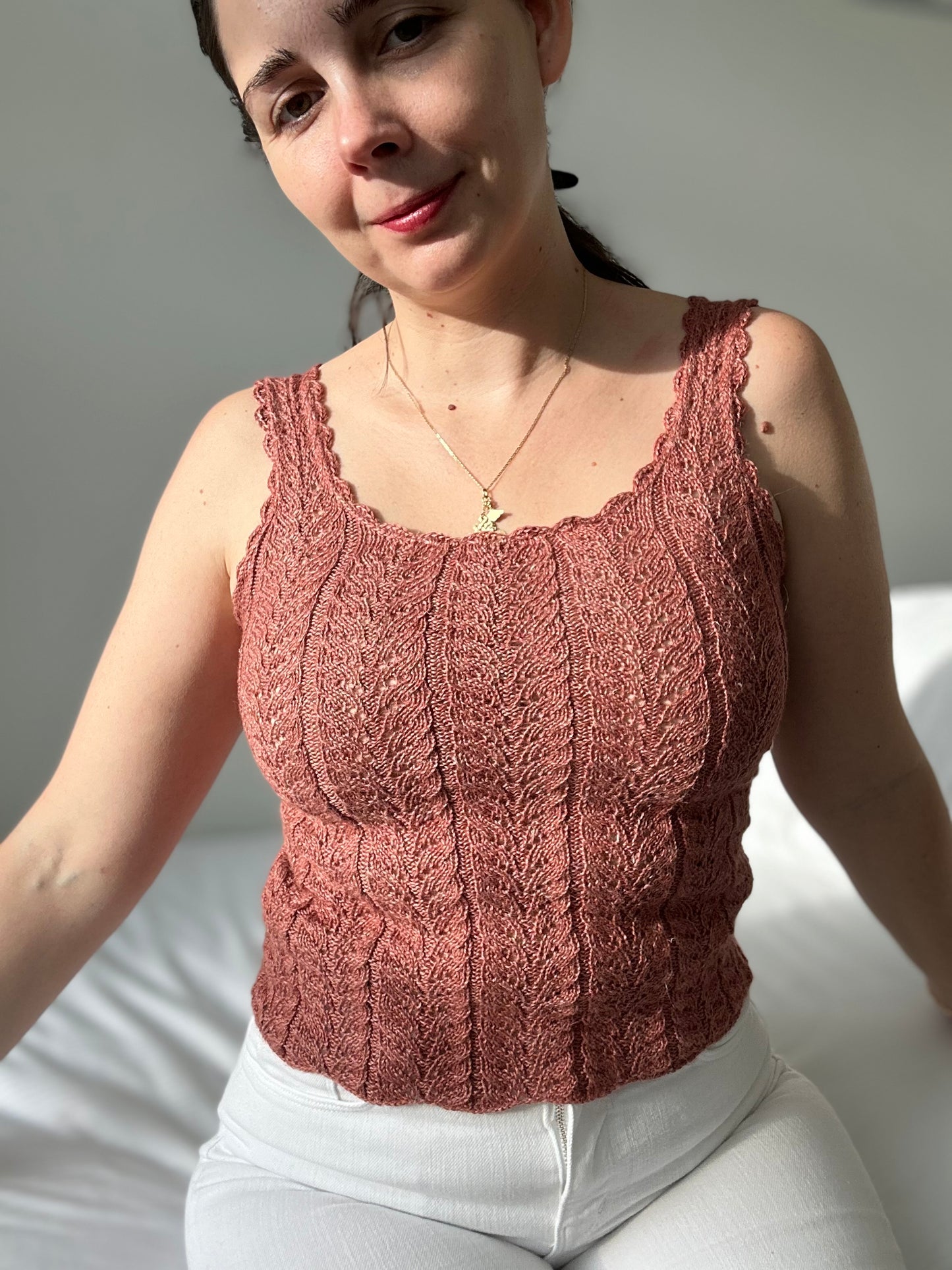
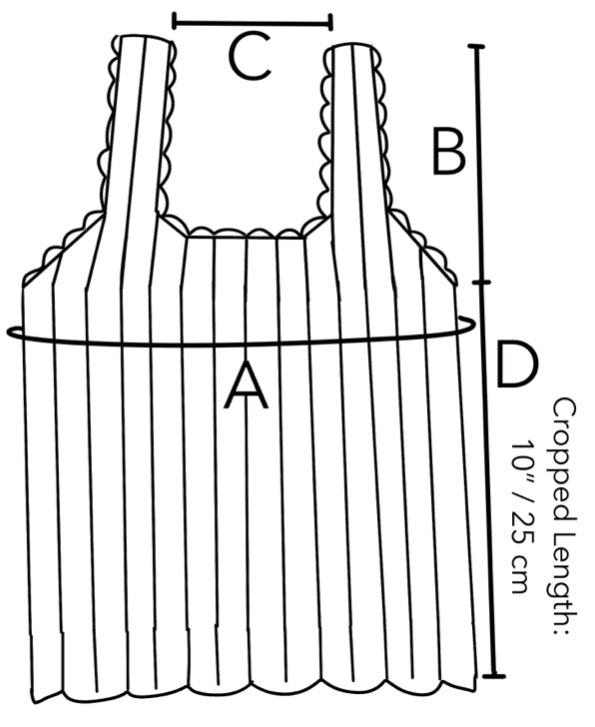
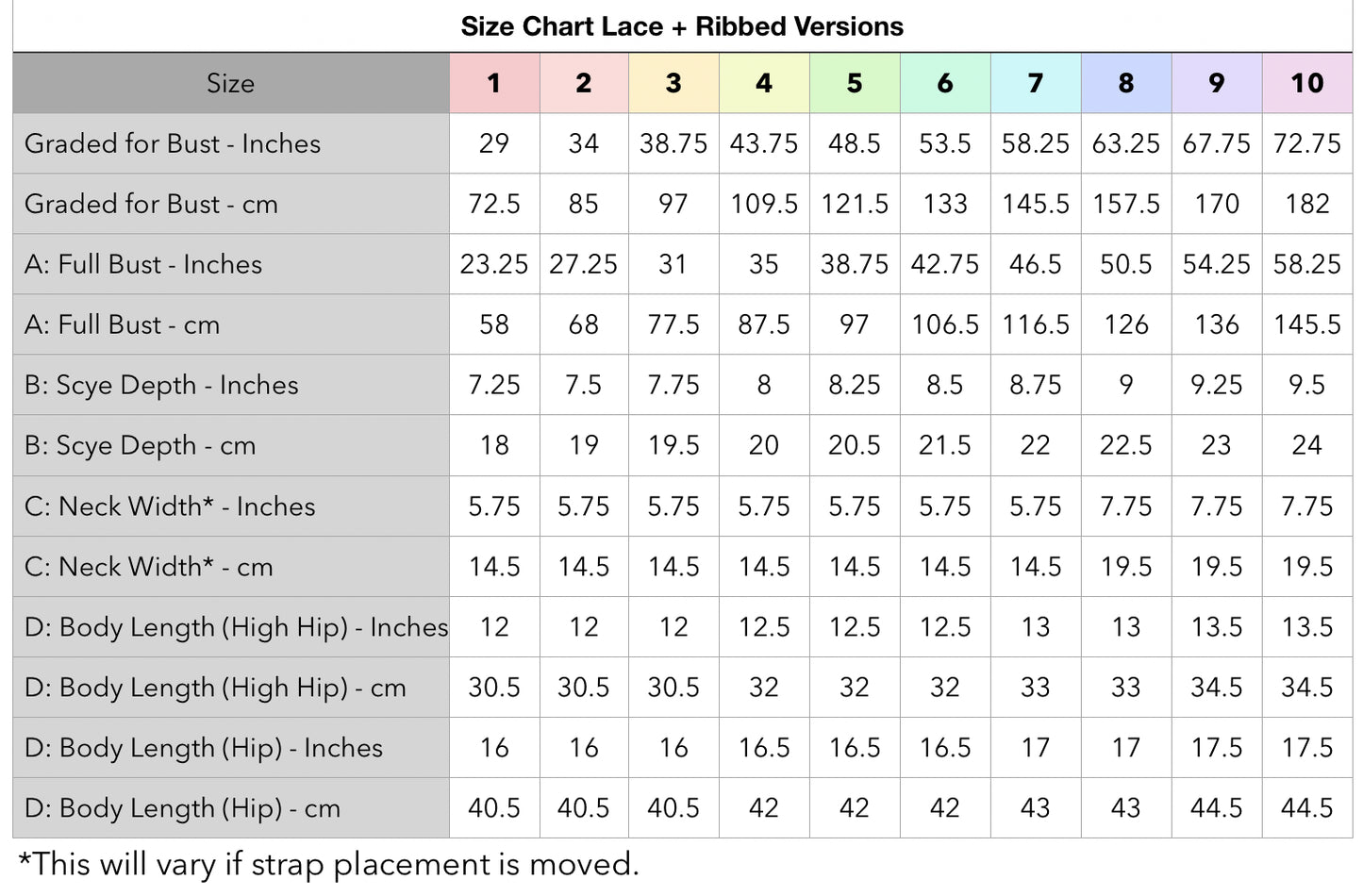
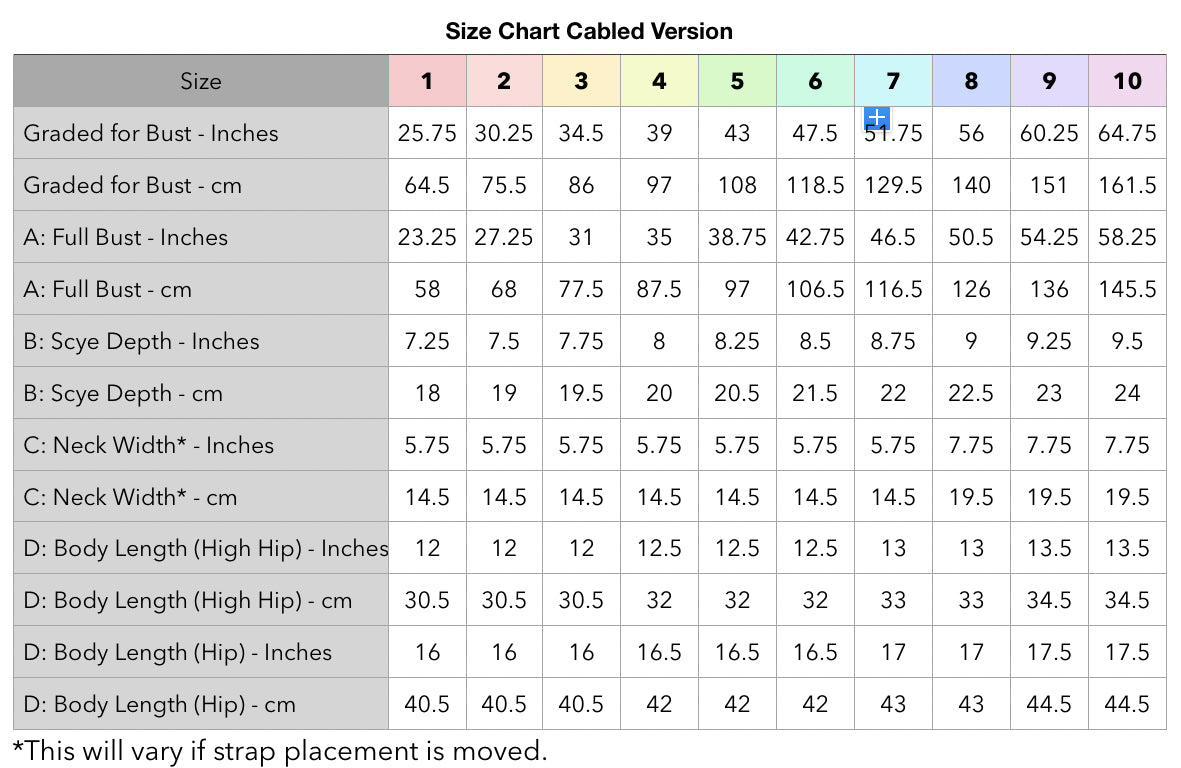
Details
Sizing
Gauge
Ribbing: 33 stitches and 44 rows in 4” / 10 cm in 6 x 2 ribbing on (Larger) needles, after blocking, unstretched. It will stretch out more once worn.
Cables: 33 stitches and 41 rows in 4” / 10 cm in cable pattern on (Larger) needles, after blocking, unstretched. It will stretch out more when worn, but less than the other versions.
Lace: 33 stitches and 44 rows in 4” / 10 cm in lace pattern on (Larger) needles, after blocking, unstretched. It will stretch out more once worn.
Note: Gauge plays a big role in how the camisole will fit. Even 1 stitch off in 4” / 10 cm will change the circumference significantly. If you have fewer stitches per 4” / 10 cm than the pattern gauge, choose a smaller size that will give you the recommended amount of negative ease at your gauge.
For example, the finished garment circumference at 30 sts in 4” / 10 cm is 25.5”, 29.75”, 34.25” (38.5”, 42.75”, 47”) {51.25”, 55.5” 59.75”, 64”} / 64 cm, 74.5 cm, 85.5 cm, (96 cm, 106.5 cm, 117.5 cm) {128 cm, 138.5 cm, 149.5 cm, 160 cm}.
That’s 2” to 6” / 5 cm to 15 cm bigger, depending on the size.
Needles & Notions
Ribbing / Lace:
(Larger) US 1.5 / 2.5 mm circular needles, or size needed to obtain gauge after blocking.
(Smaller) US 1 / 2.25 mm circular needles, used for the I-cord trim.
2.5 mm crochet hook, used for the crochet trim.
1 stitch marker, 10 removable stitch markers, darning needle, scissors, tape measure, waste yarn or stitch holders.
Cables:
(Larger) US 2.5 / 3 mm circular needles, or size needed to obtain gauge after blocking. Note that this is 2 sizes larger than the other versions, as the cables pull the stitches in for a denser fabric.
(Smaller) US 1 / 2.25 mm circular needles, used for the I-cord trim.
2.5 mm crochet hook, used for the crochet trim.
1 stitch marker, 10 removable stitch markers, cable needle, darning needle, scissors, tape measure, waste yarn or stitch holders.
Yardage
The Four Seasons Camisole uses light fingering weight yarn, or lace weight yarn held double.
Ribbing: Sandnes Garn Tynn Line 2, 3, 3, (3, 4, 4), {4, 5, 5, 5} skeins (241 yards / 220 meters per 50 g), 53% Cotton, 33% Viscose, 14% Linen, in the color ‘3161 Acorn’.
OR 424, 486, 544, (624, 745, 816) {906, 980, 1076, 1151} yards / 387, 444, 497, (570, 680, 745) {827, 894, 982, 1051} meters of comparable light fingering weight yarn. Yardages based on the high hip length body option.
25, 29, 33, (37, 41, 45) {49, 53, 57, 62} yards / 23, 27, 30, (34, 38, 41) {45, 49, 52, 56} meters will be needed per additional 1” / 2.5 cm of body.
Cables: Knitting For Olive Compatible Cashmere 6, 7, 7, (8, 10, 11), {12, 13, 14, 15} skeins (164 yards / 150 meters per 25 g), 100% Cashmere, in the color ‘Cream’. **Held double**.
OR 870, 998, 1117, (1282, 1530, 1675) {1860, 2011, 2209, 2362} yards / 796, 913, 1022, (1172, 1399, 1532) {1702, 1839, 2020, 2161} meters of comparable lace weight yarn. Yardages based on the high hip length body option.
37, 44, 50, (56, 62, 68) {74, 80, 86, 93} yards / 34, 40, 45, (51, 56, 62) {68, 73, 79, 85} meters will be needed per additional 1” / 2.5 cm of body.
Lace: Camellia Fiber Co. CFC Flax Fingering 2, 2, 2, (2, 2, 3), {3, 3, 3, 3} skeins (437 yards / 400 meters per 100 g), 50% Alpaca, 25% Linen, 25% Silk, in the color ‘Garden Rose’.
OR 458, 525, 588, (674, 805, 882) {979, 1058, 1162, 1243} yards / 419, 481, 538, (617, 737, 807) {896, 969, 1064, 1138} meters of comparable fingering weight yarn. Yardages based on the high hip length body option.
30, 35, 39, (44, 49, 54) {59, 64, 68, 73} yards / 27, 32, 36, (40, 45, 49) {54, 58, 62, 67} meters will be needed per additional 1” / 2.5 cm of body.
Techniques
Long Tail CO
German Short Rows (optional)
Directional decreases (and increases if working that kind of body shaping)
Lace: K2tog, YO, SSK, maintaining the stitch pattern.
Cables: 3-3 RC, 3-3 LC, maintaining the stitch pattern.
Binding off in pattern
What’s Included
-Construction overview PDF
-Separate PDF for each texture
-Optional bust short rows
-Optional body shaping
-Special techniques with video links
-Hyperlinks within the pattern for easy navigation
-Full schematic and size chart


